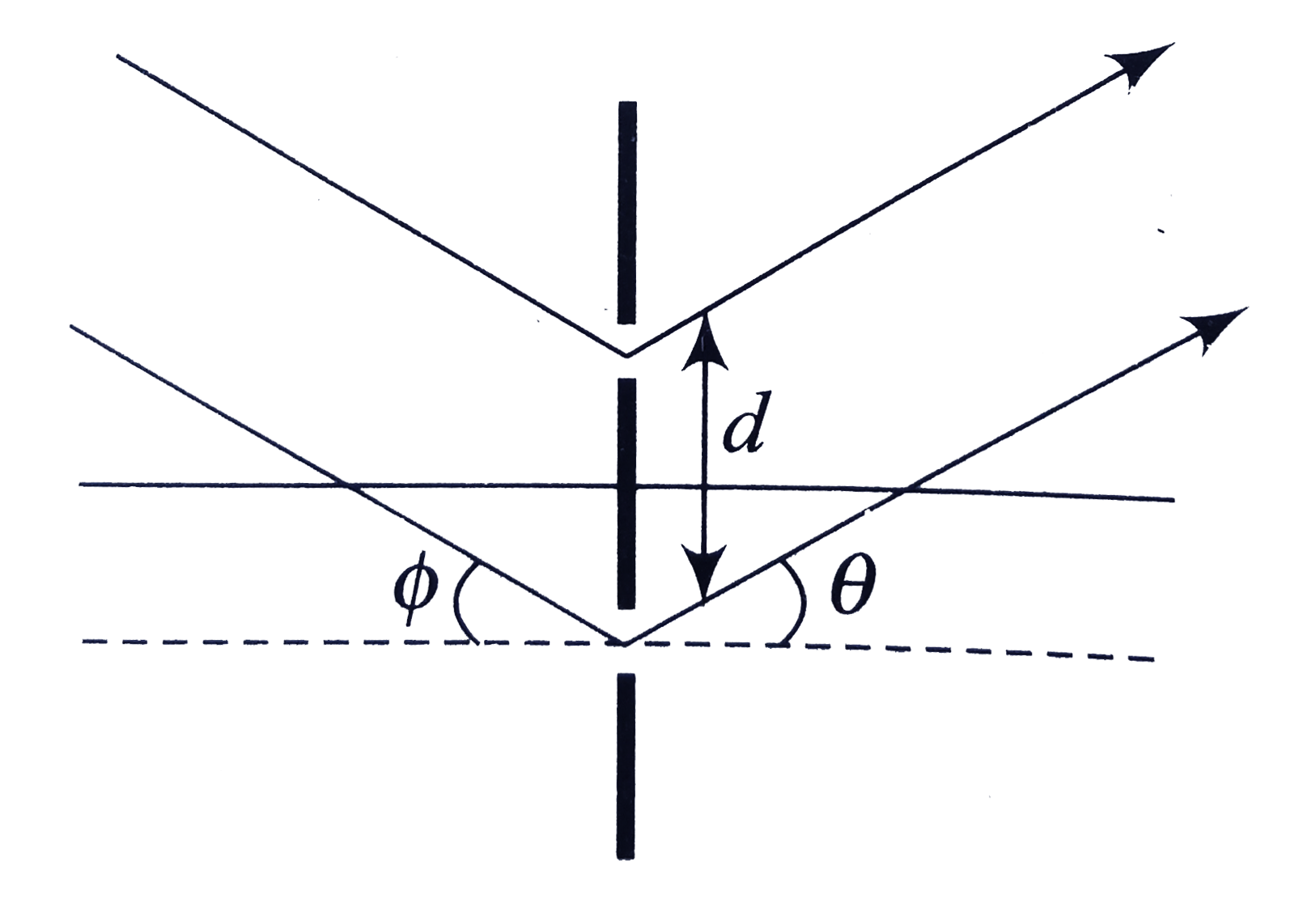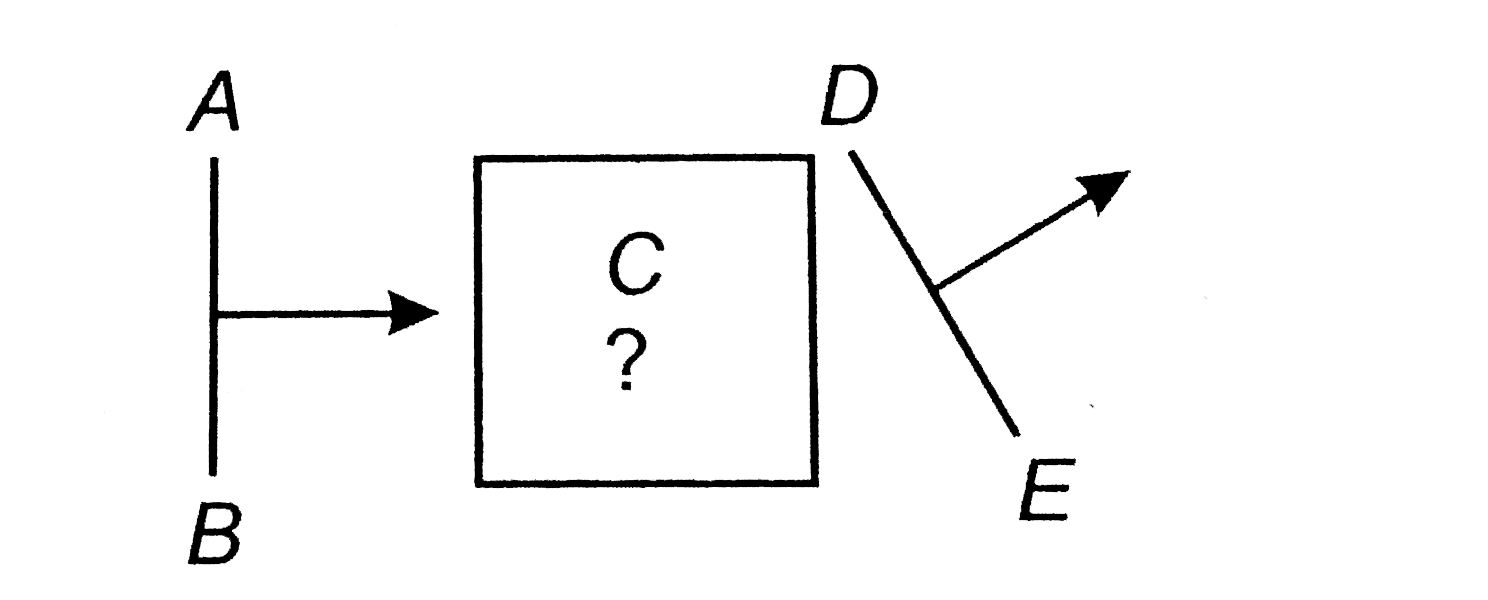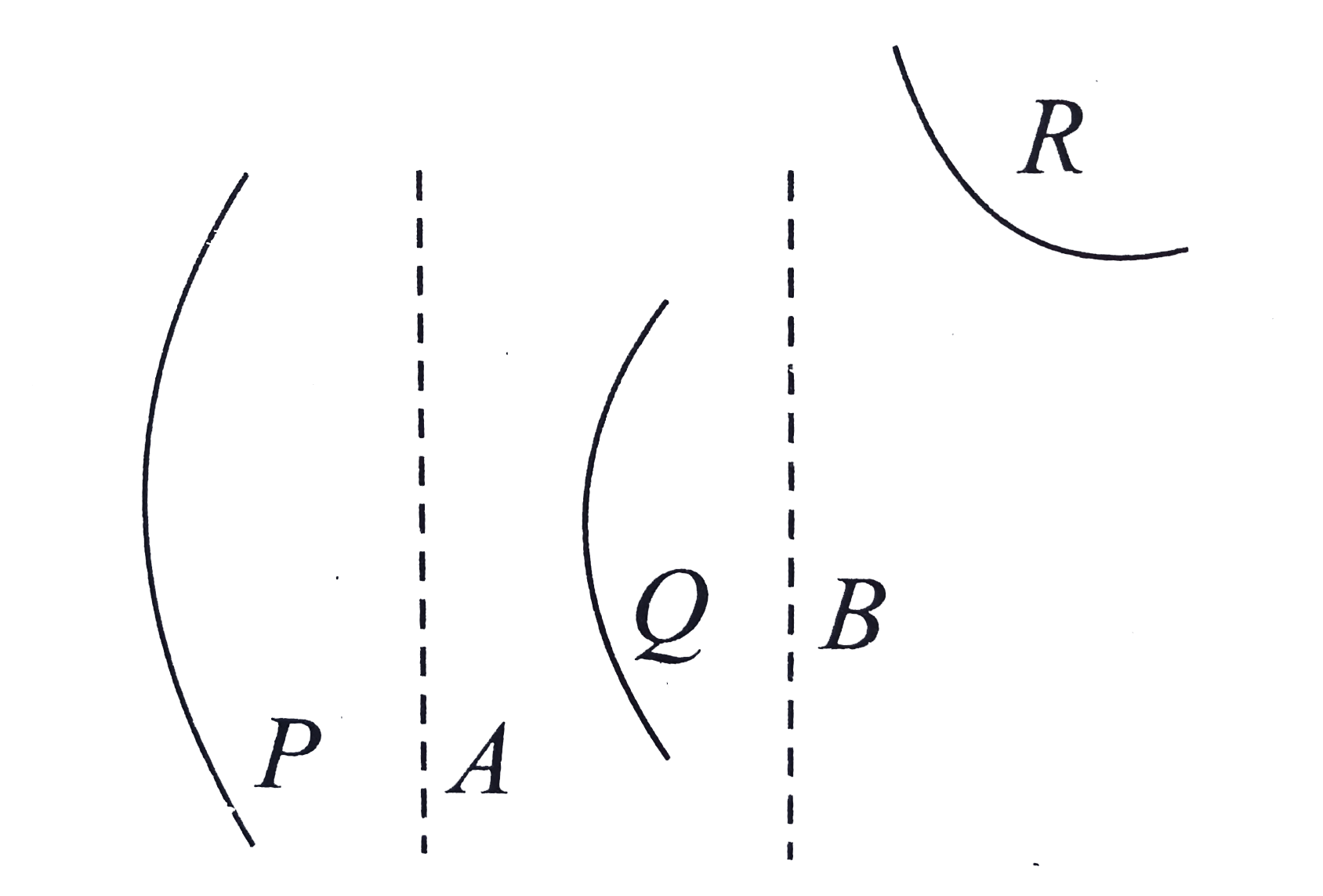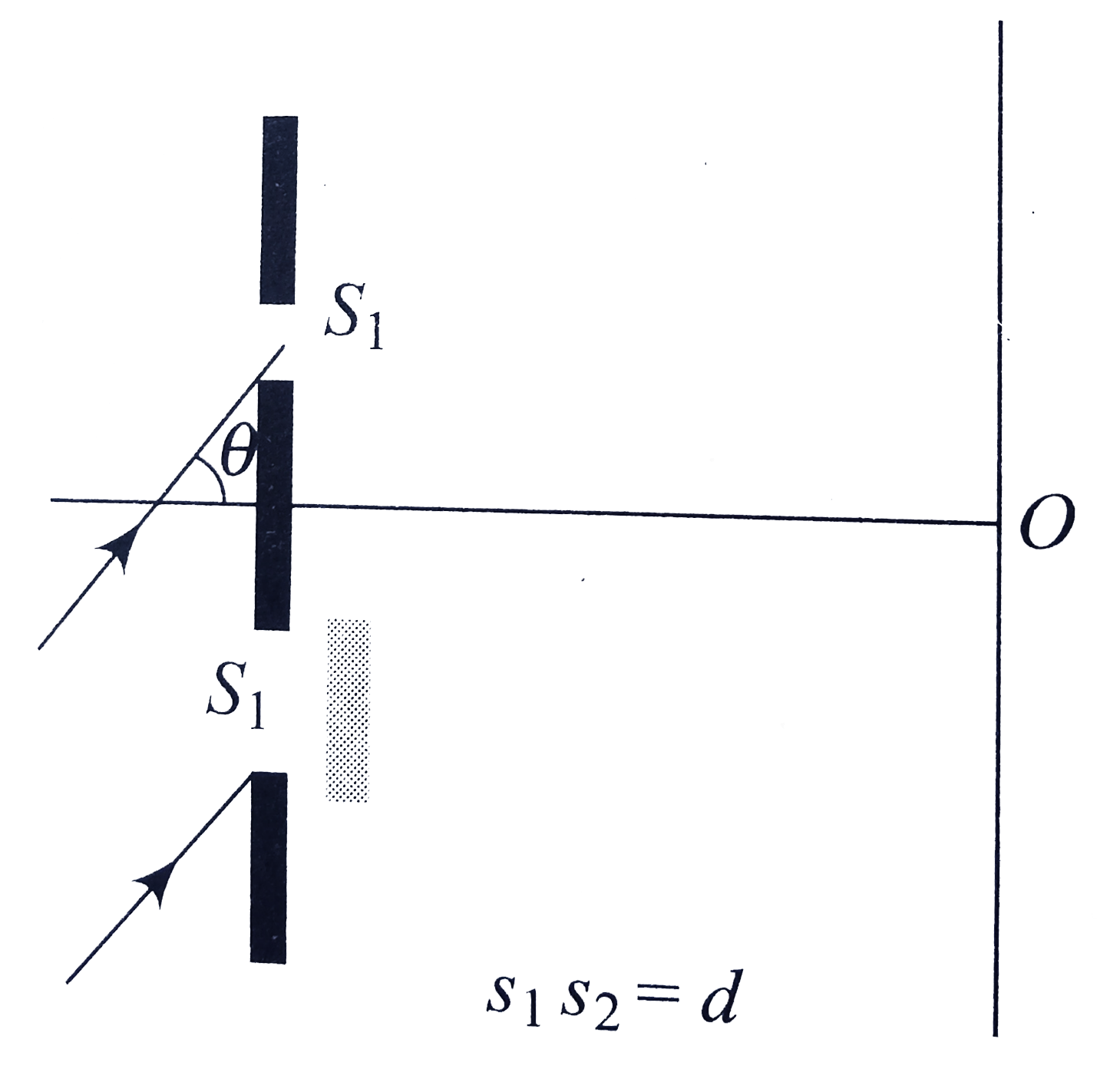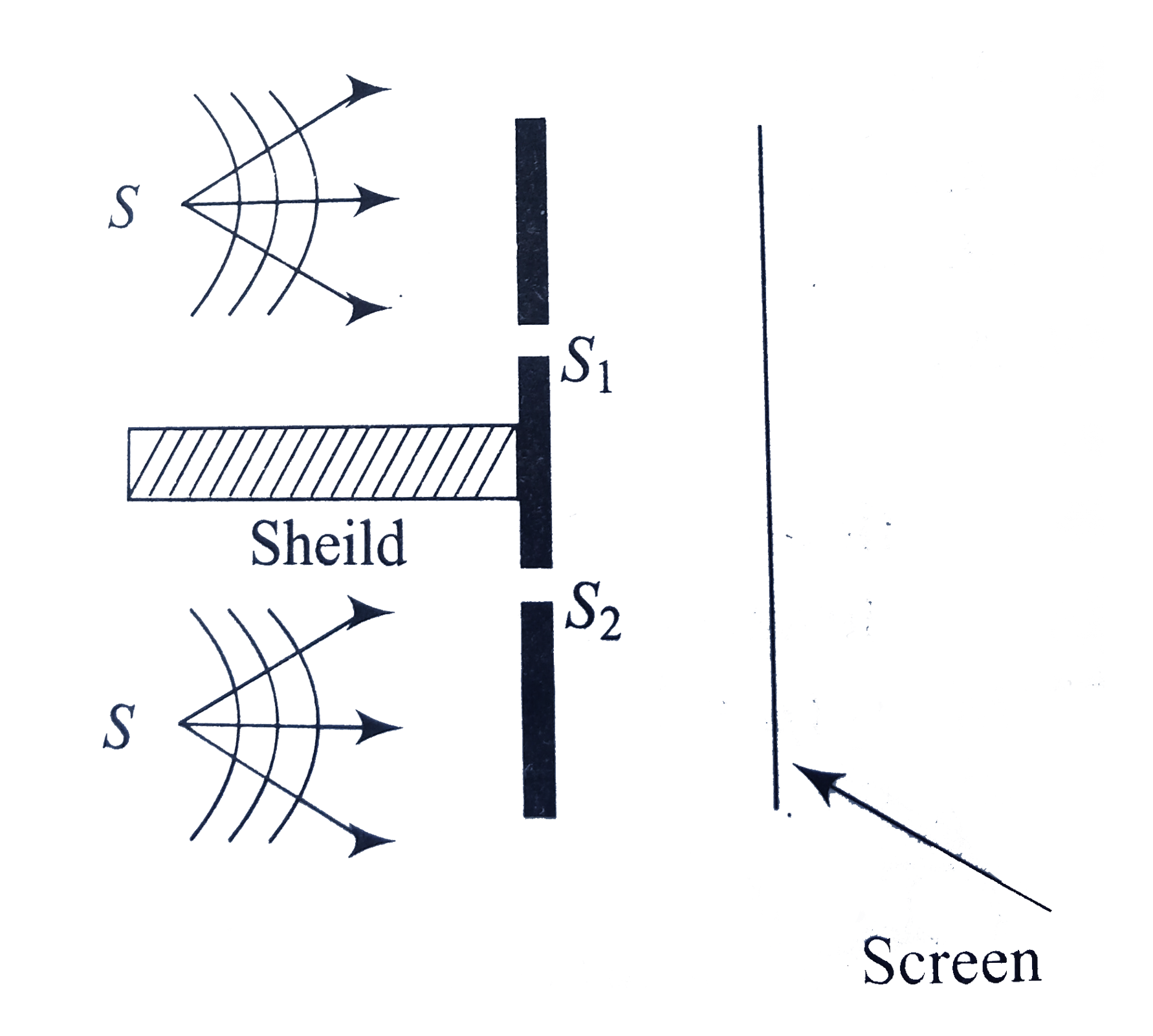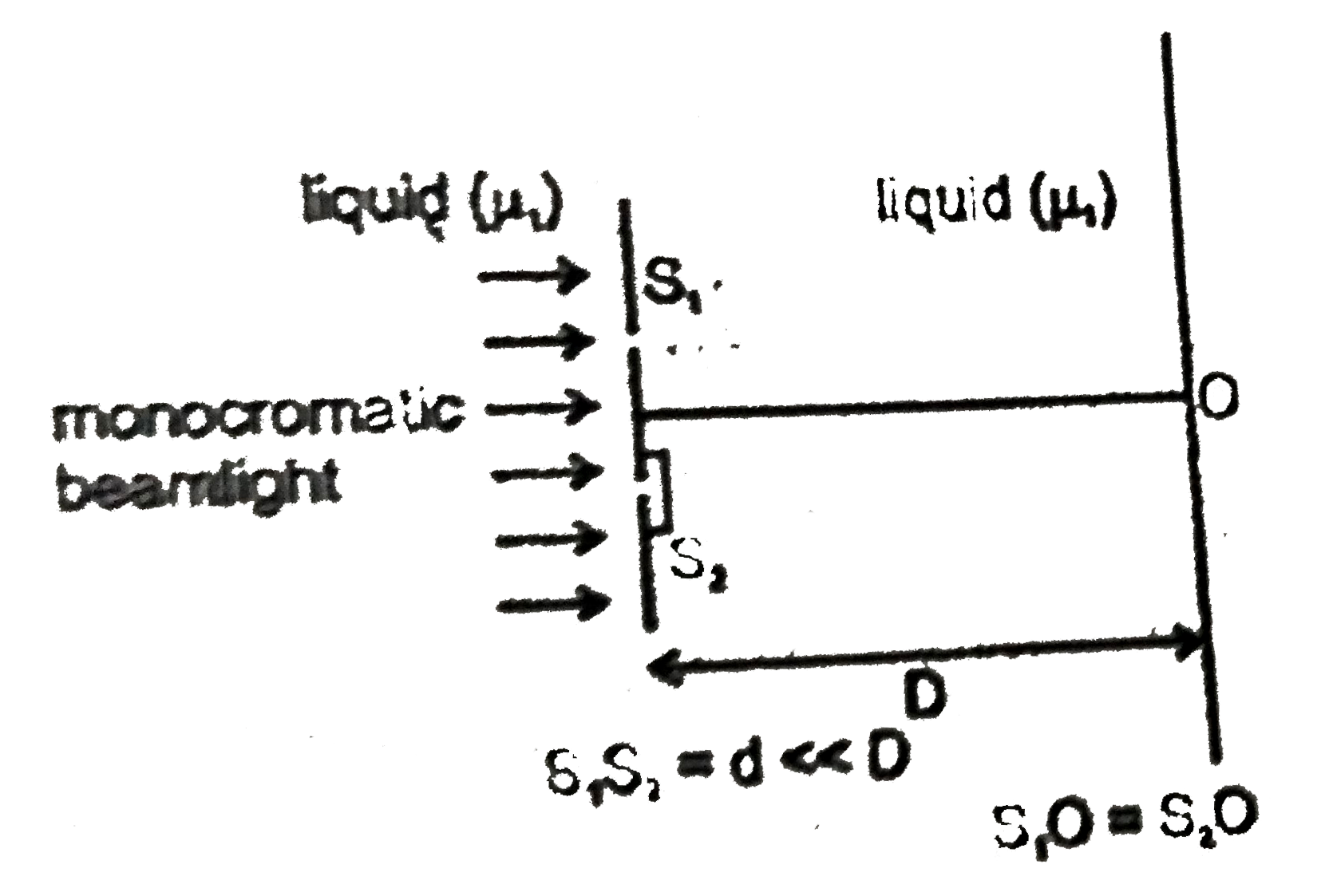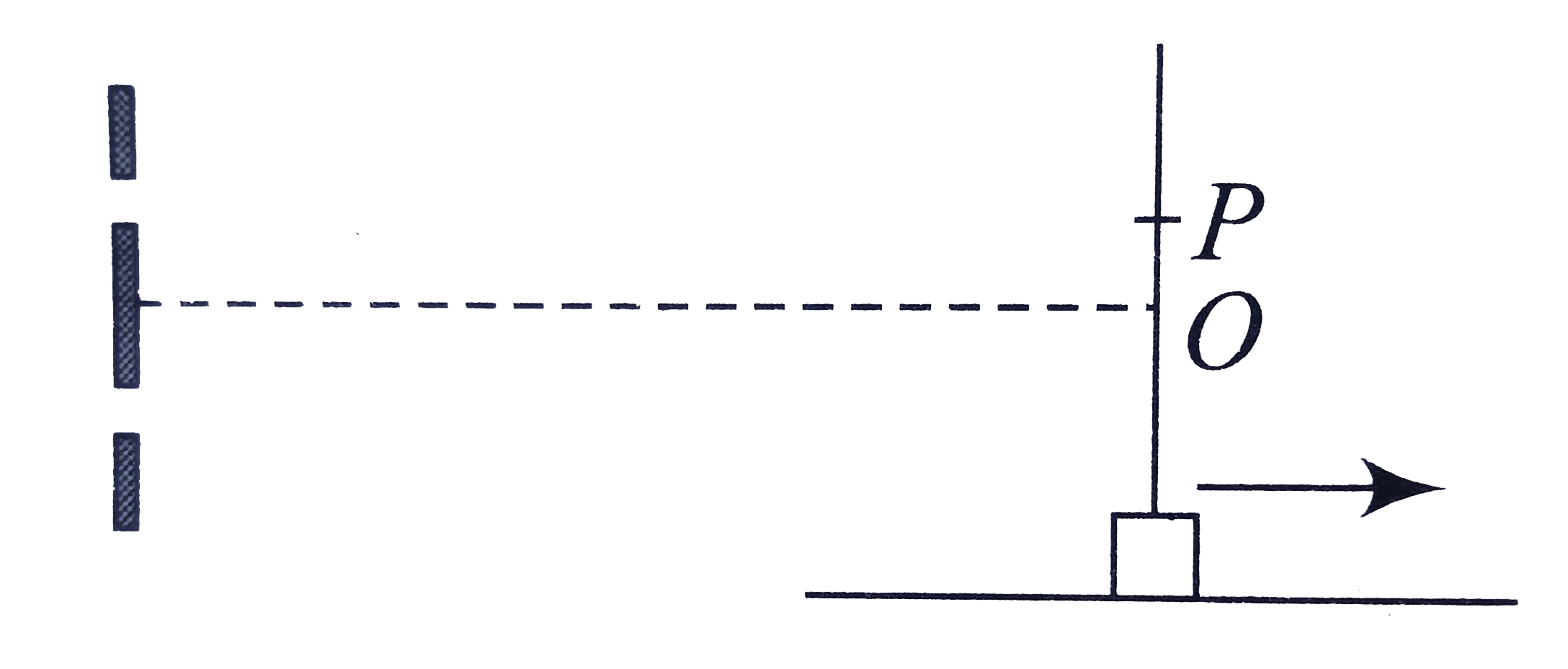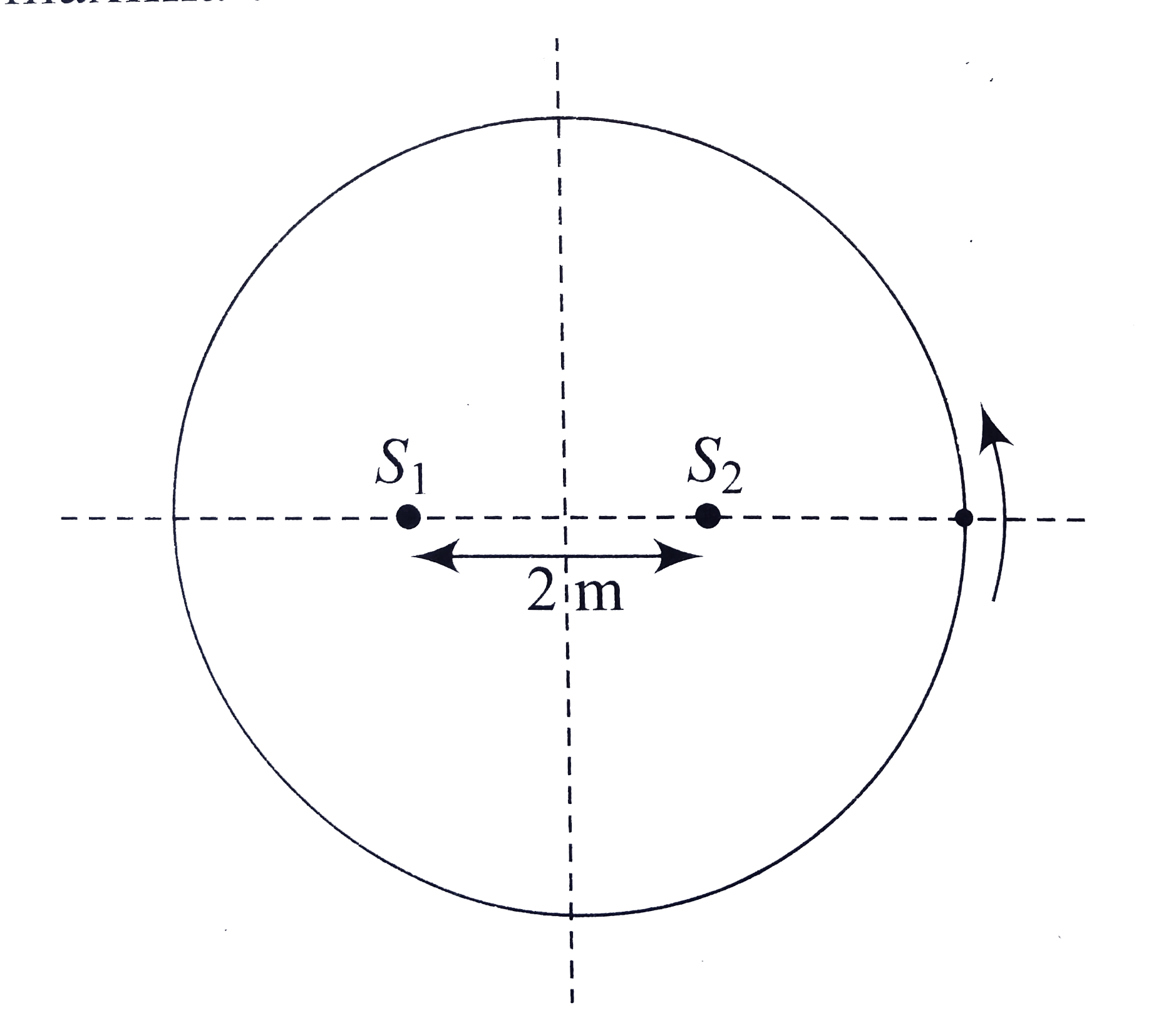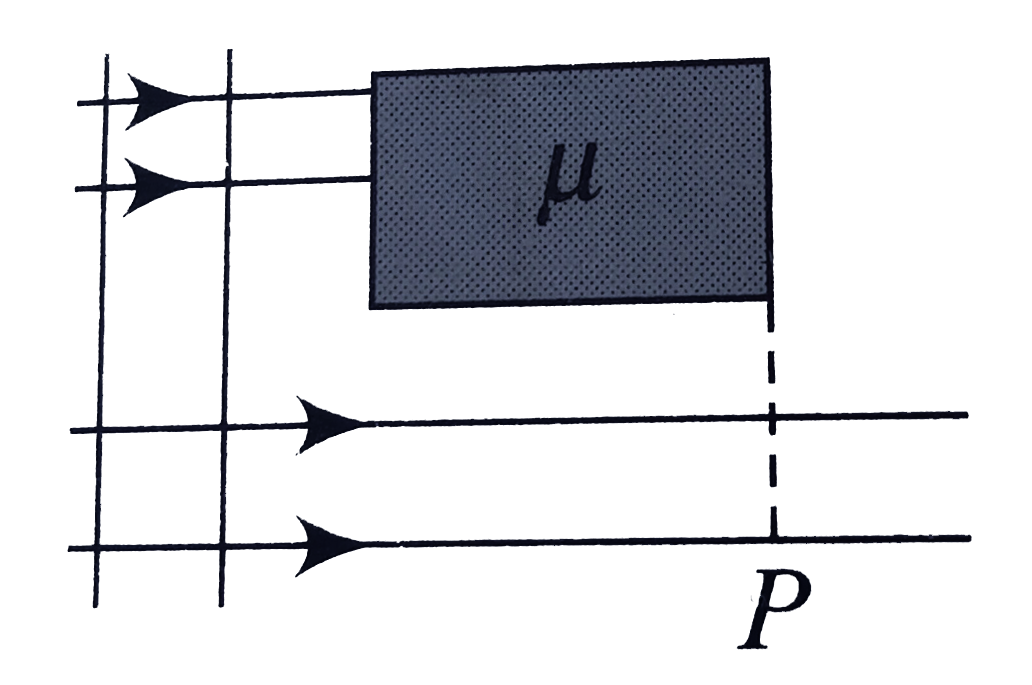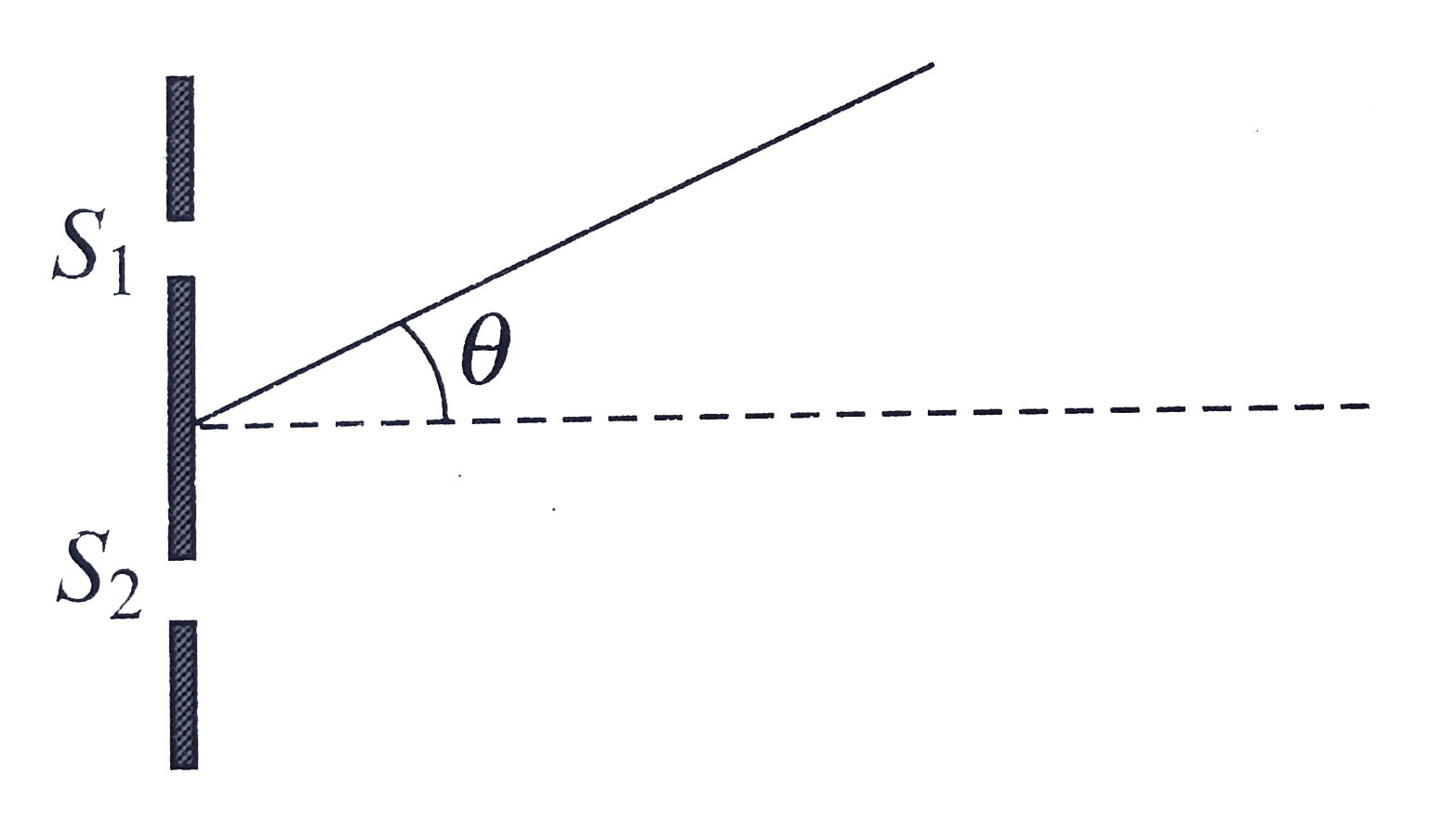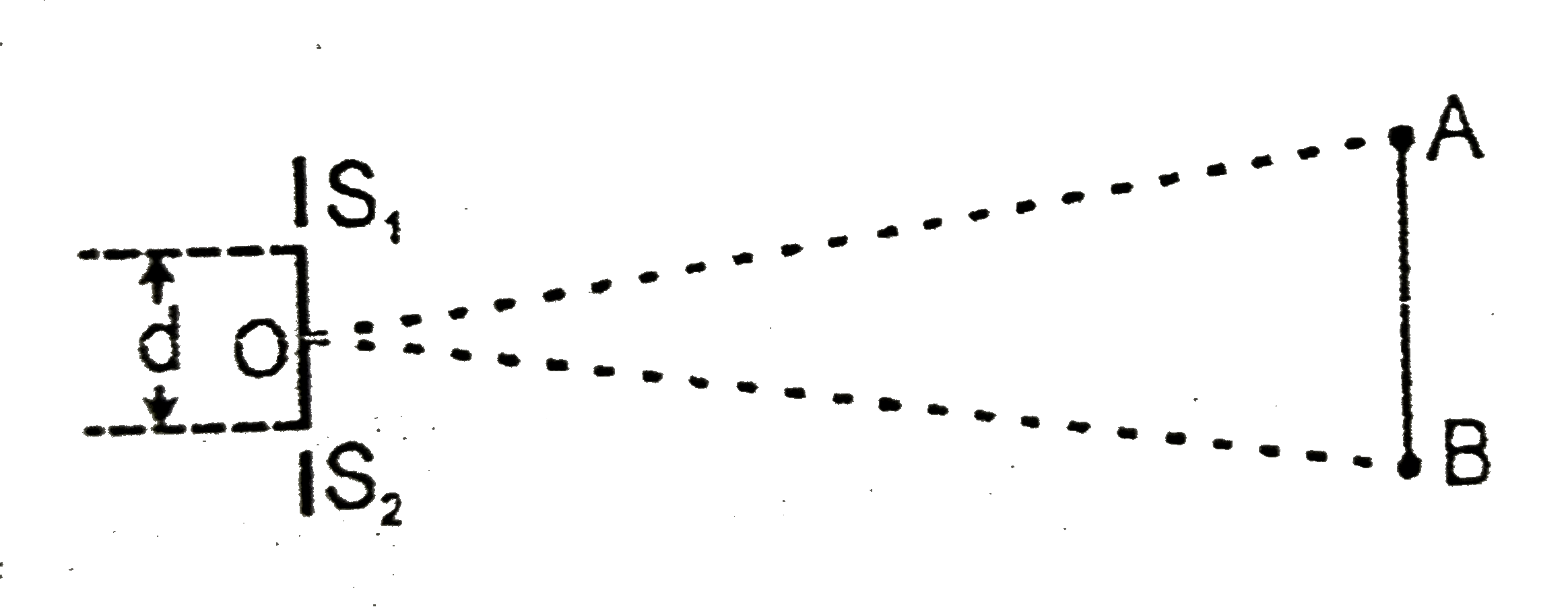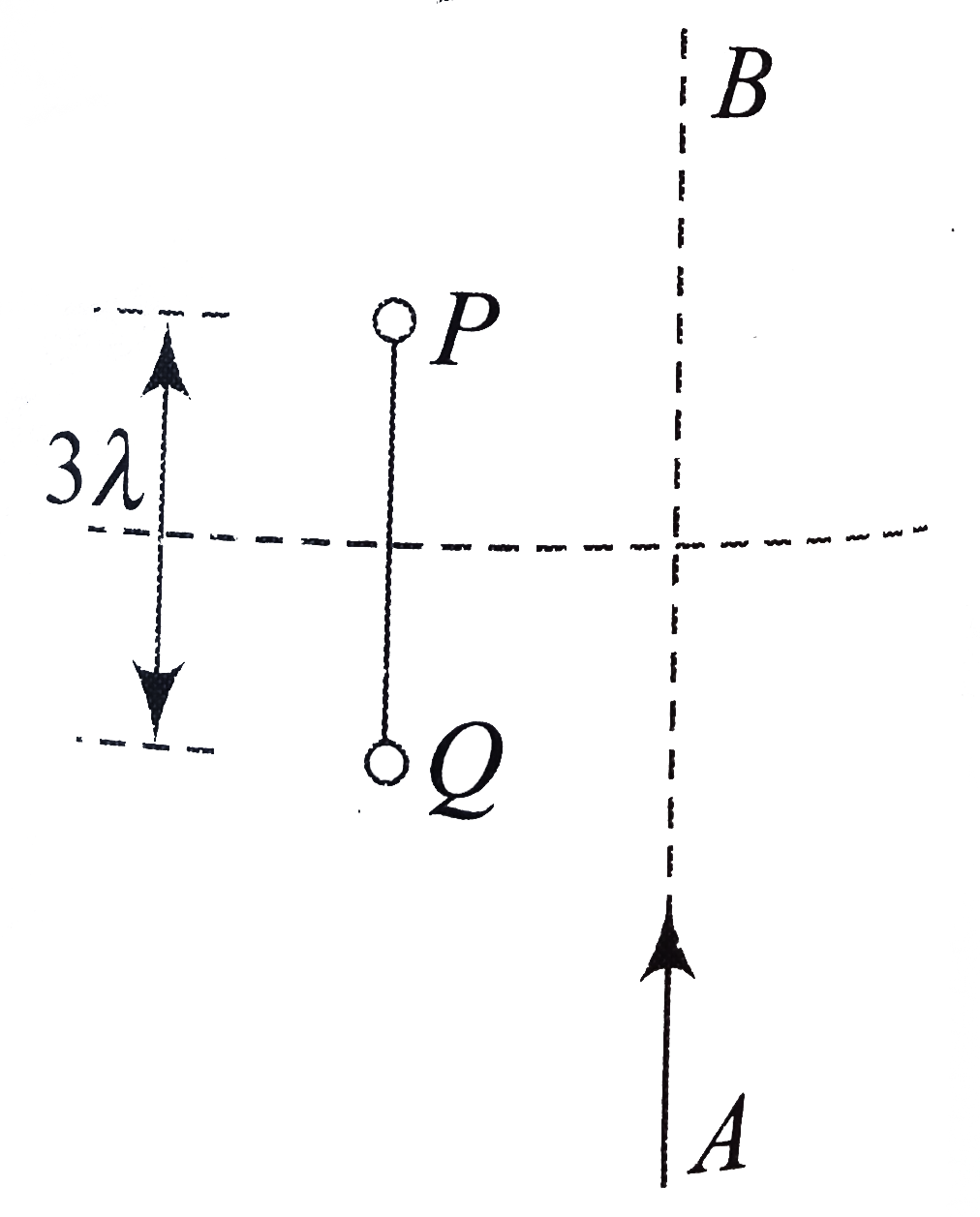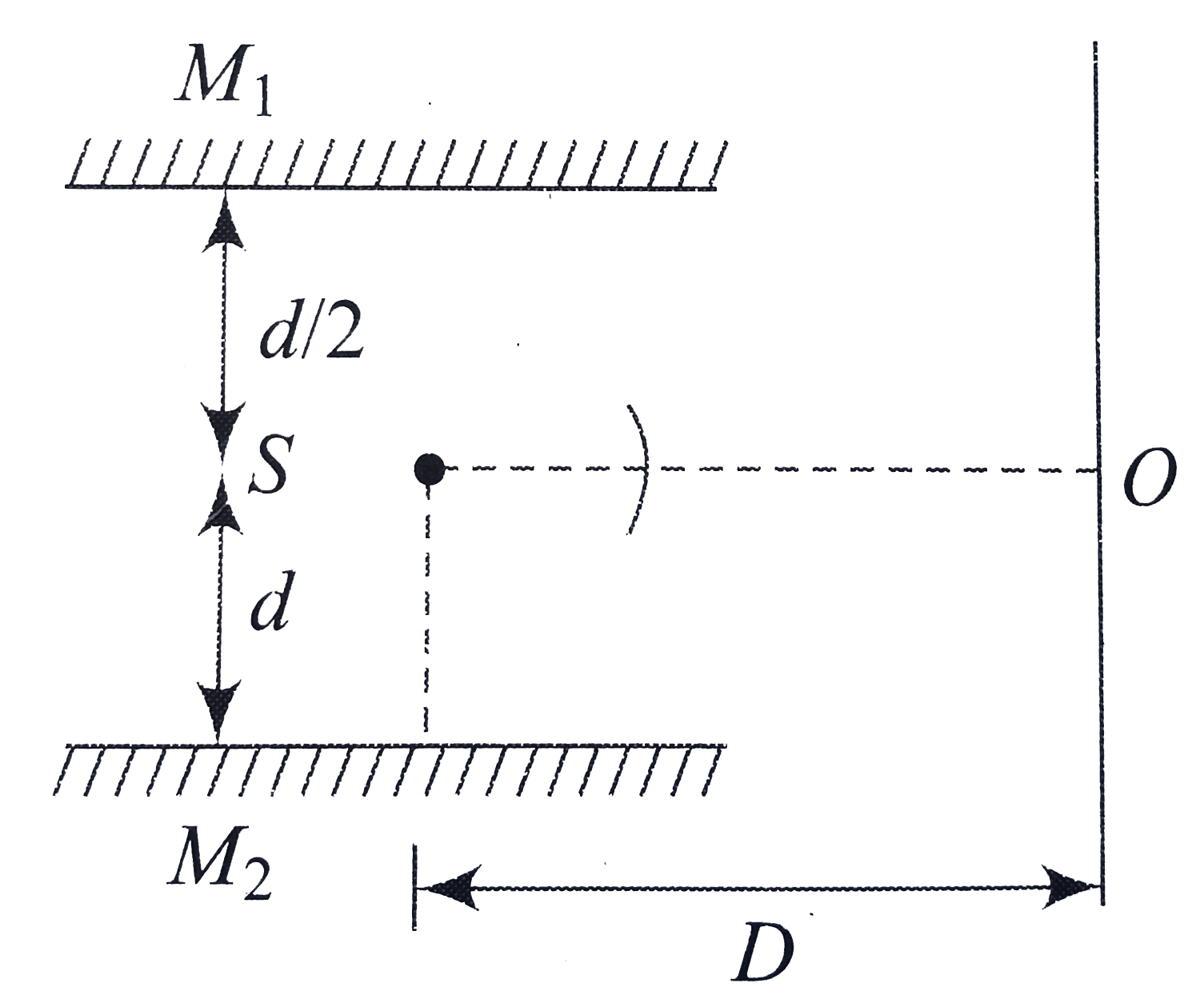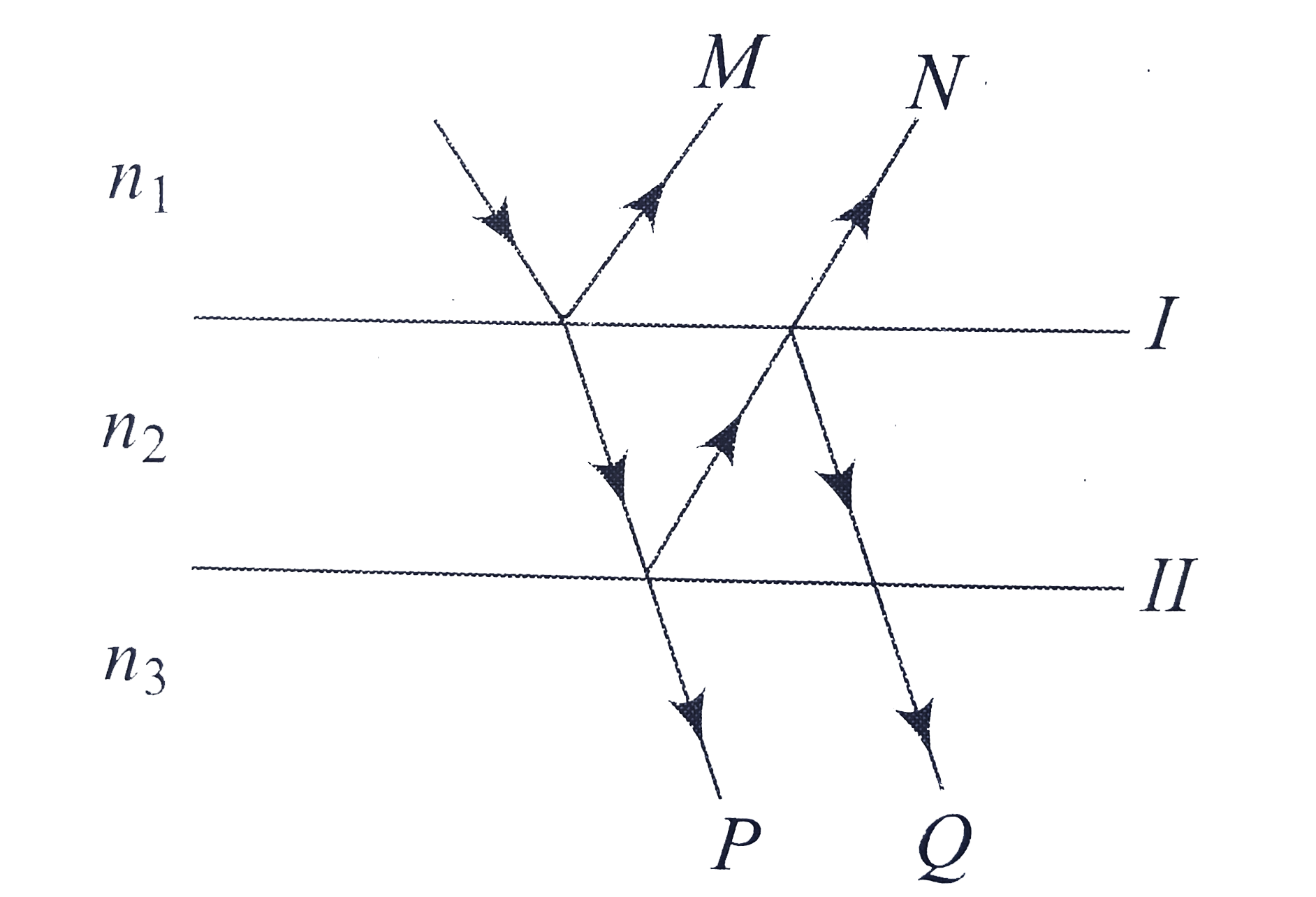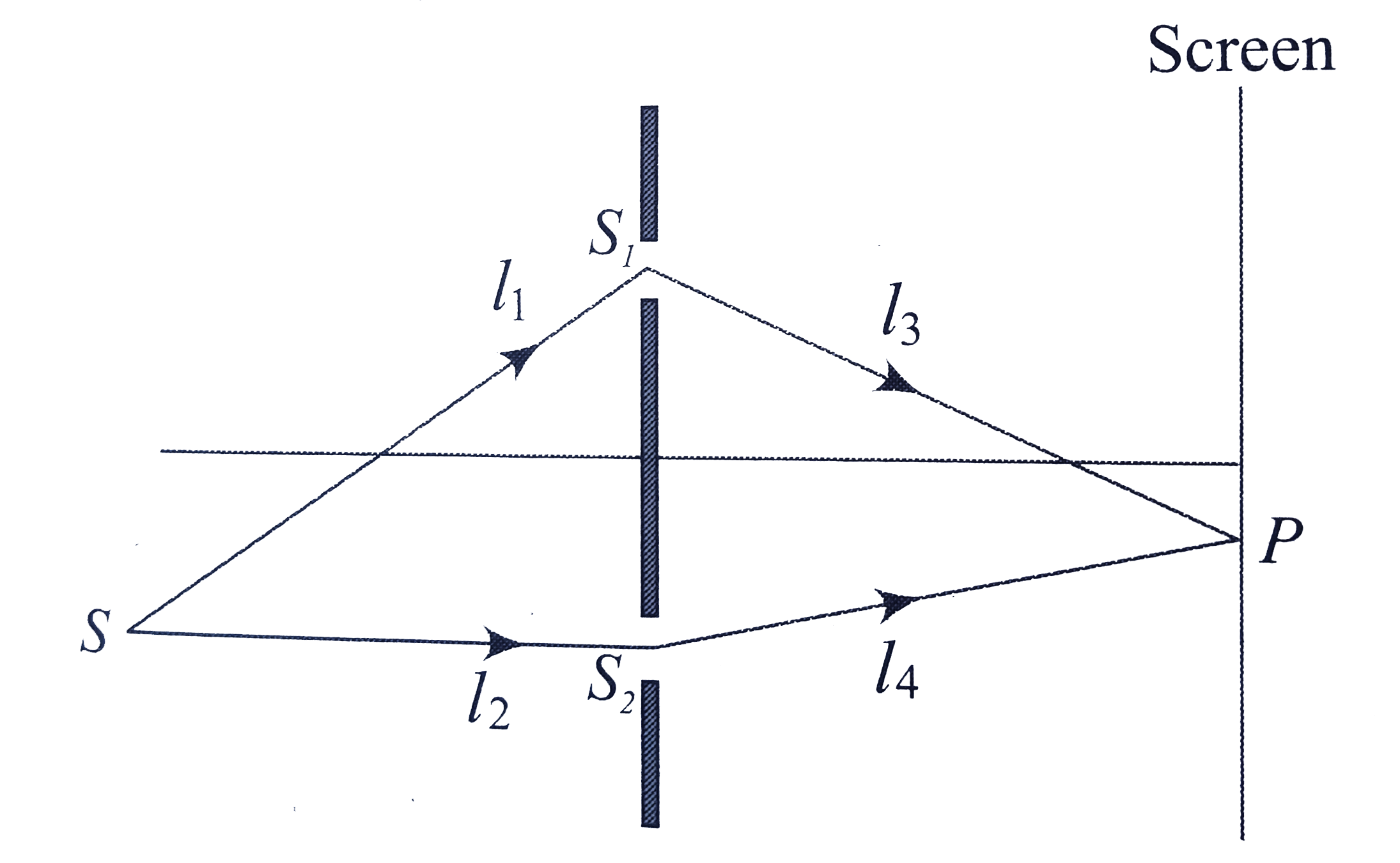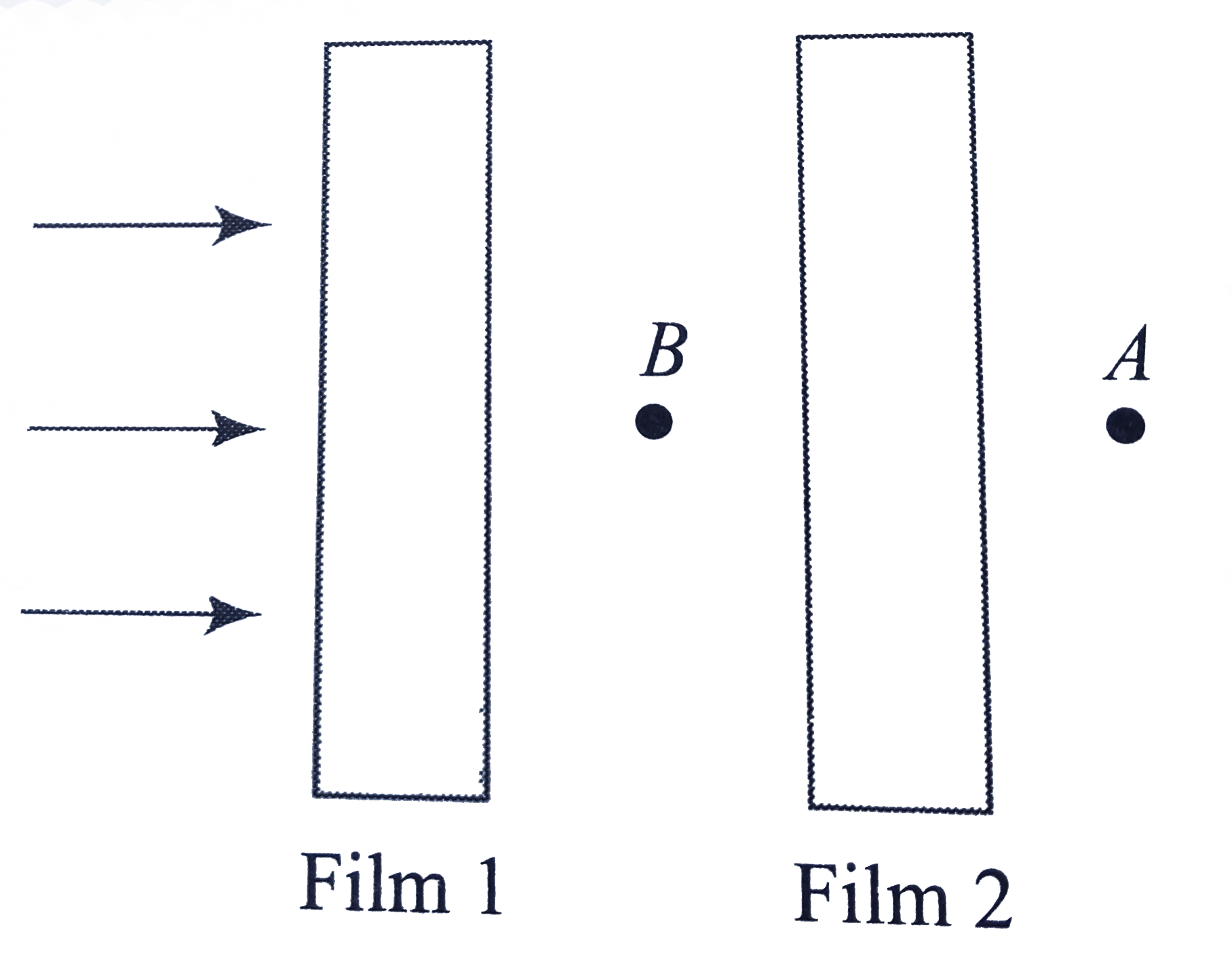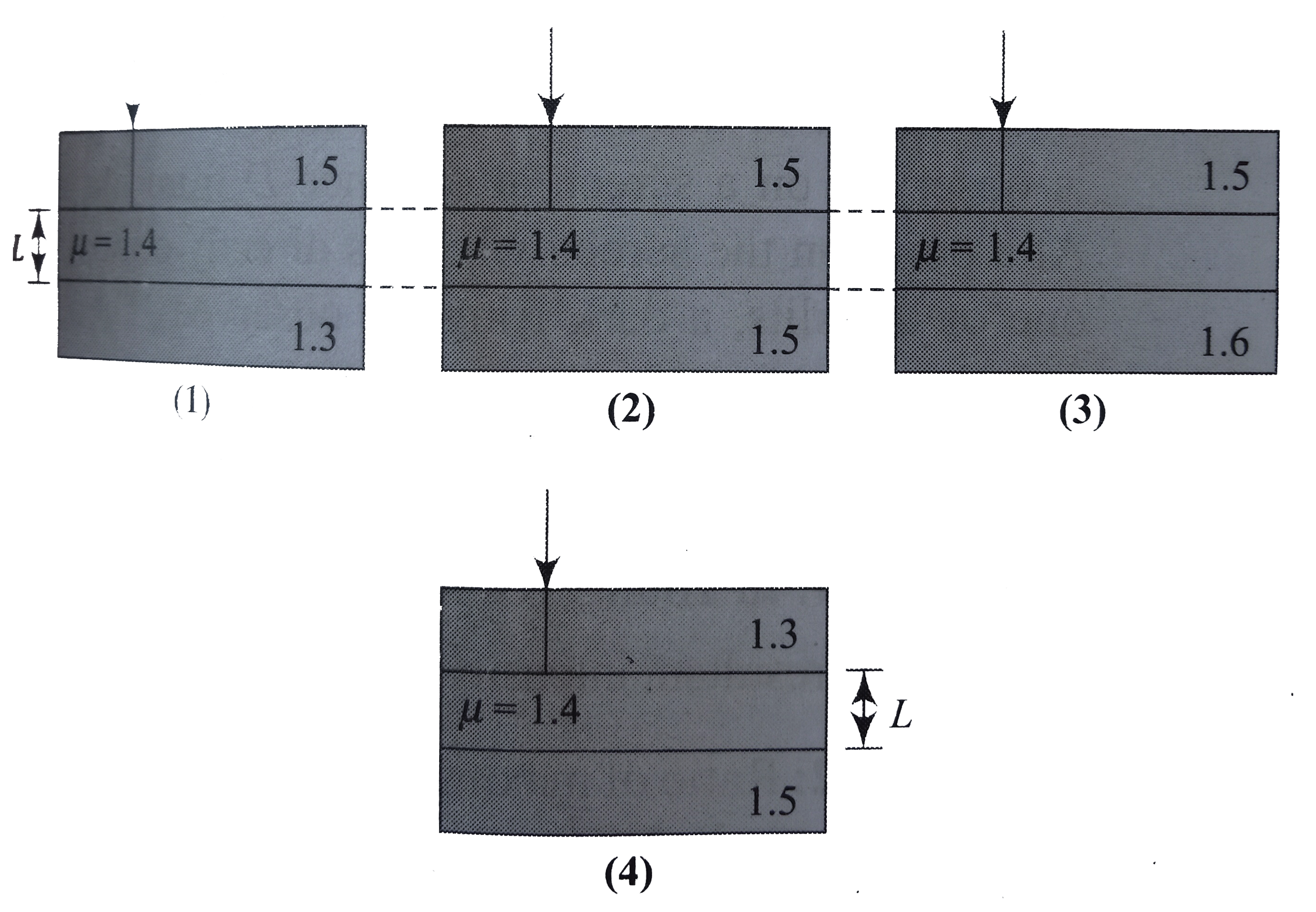Single Correct from CENGAGE PHYSICS Chapter 47 WAVE OPTICS for Class 12
| Class 12 | PHYSICS |
| Chapter | WAVE OPTICS |
| CENGAGE PHYSICS | Single Correct |
| Medium | English |
| Academic Year | 2023-2024 |
Question 3
In a double-slit experiment, two parallel slits are illuminated first bylight of wavelength 400 nm and then by light of unknown wavelength. The fourth-order dark fringe resulting from the known wavelength of light falls in the same place on the screen as the second-order bright fringe from the unknown wavelength. The value of unknown wavelength of light isView SolutionQuestion 6
Blue light of wavelength 480 nm is most strongly reflected off a thin film of oil on a glass slab when viewed near normal incidence. Assuming that the index of refraction of the oil is 1.2 and that of the glass is 1.6, what is the minimum thickness of the oil film (other then zero)?View SolutionQuestion 7
The slits in a double-slit interference experiment are illuminated by orange light (λ=60nm). A thin transparent plastic of thickness t is placed in front of one of the slits. The nunber of fringes shifting on screen is plotted versus the refractive index μ of the plastic in graph shown in figure. The value of t is
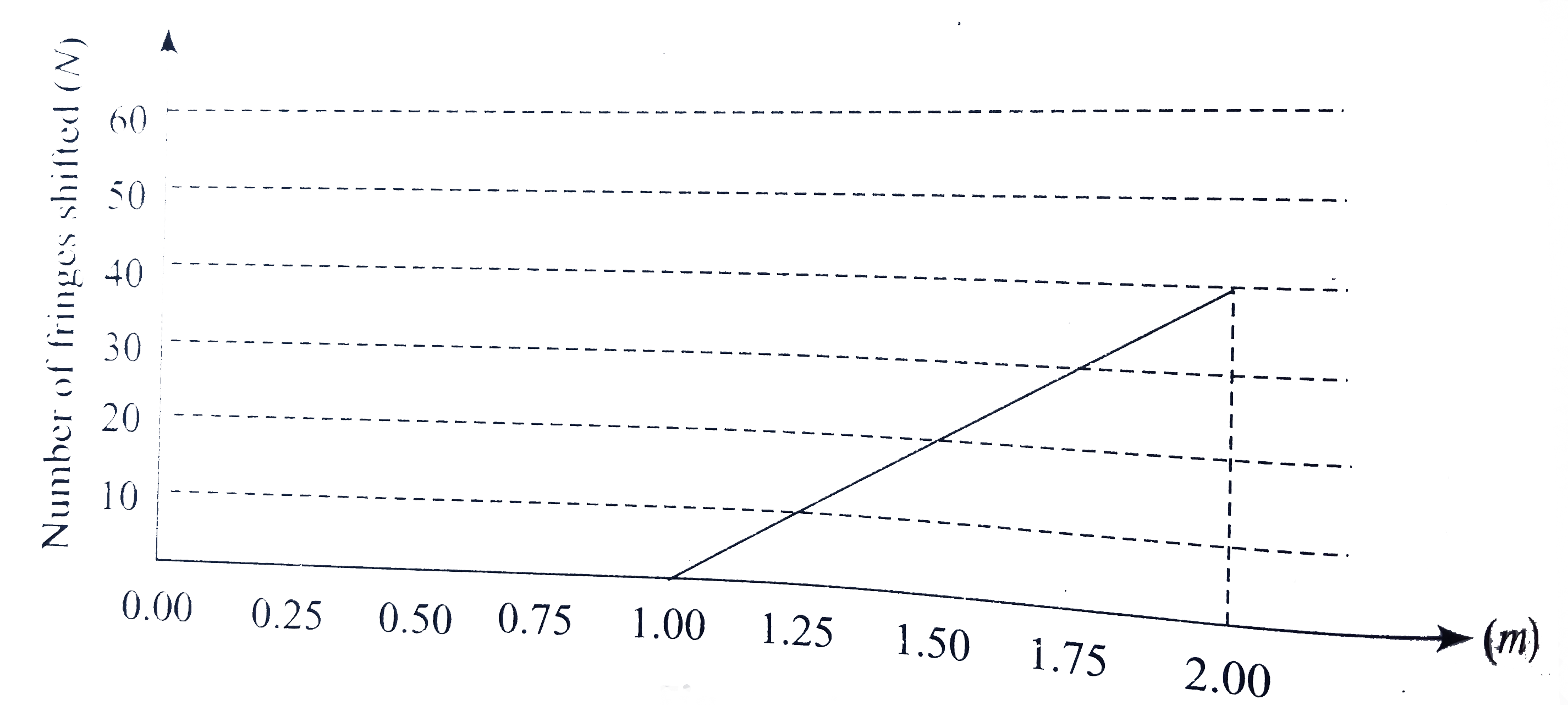 View Solution
View SolutionQuestion 11
In Young's double-slit experiment d/D=10−4 (d = distance between slits, D = distance of screen from the slits) At point P on the screen, resulting intensity is equal to the intensity due to the individual slit I0. Then, the distance of point P from the central maximum is (λ=6000Å)View SolutionQuestion 14
A plane wave of monochromatic light falls normally on a uniform thin or oil which covers a glass plate. The wavelength of source can be varied continuously. Complete destructive is observed for λ=5000Å and λ=1000Å and for no other wavelength in between. If μ of oil is 1.3 and that of glass is 1.5, the thickness of the film will be View SolutionQuestion 17
Two light waves having the same wavelength λ in vacuum are in phase initially. Then the first ray travels a path of length L1 through a medium of refractive index μ1. Then second ray travels a path of length L2 throug a medium of refractive index μ2. The two waves are then combined to observed interference effects. The phase difference between the two, when they interfere, is View SolutionQuestion 19
In Young's double-slit experiment, the two slits act as coherent sources of equal amplitude A and of wavelength λ. In another experiment with the same set-up the two slits are sources of equal amplitude A and wavelength λ, but are incoherent. The ratio of the intensity of light at the midpoint of the screen in the first case to that in the second case is....View SolutionQuestion 28
A plate of thickness t made of a material of refractive index μ is placed in front of one of the slits in a double slit experiment. (a) Find the changes in he optical path due to introduction of the plate. (b) Wht should be the minimum thickness t which will make the intensity at the centre of the fringe pattern zero ? Wavelength of the light used is λ. Neglect any absorption of light in the plate.View SolutionQuestion 33
In a standard Young's double-slit experiment with coherent light of wavelength 600 nm, the fringe width of the fringes in the central region (near the central fringe, P0) is observed it to be 3 mm. An extremely thin glass plate is introduced to be displaced by 11 mm. Another thin plate is placed before the second slit and it is observed that the fringe are now displaced by an additional 12 mm. If the additional optical path lengths introduced are Δ1 and Δ2 then
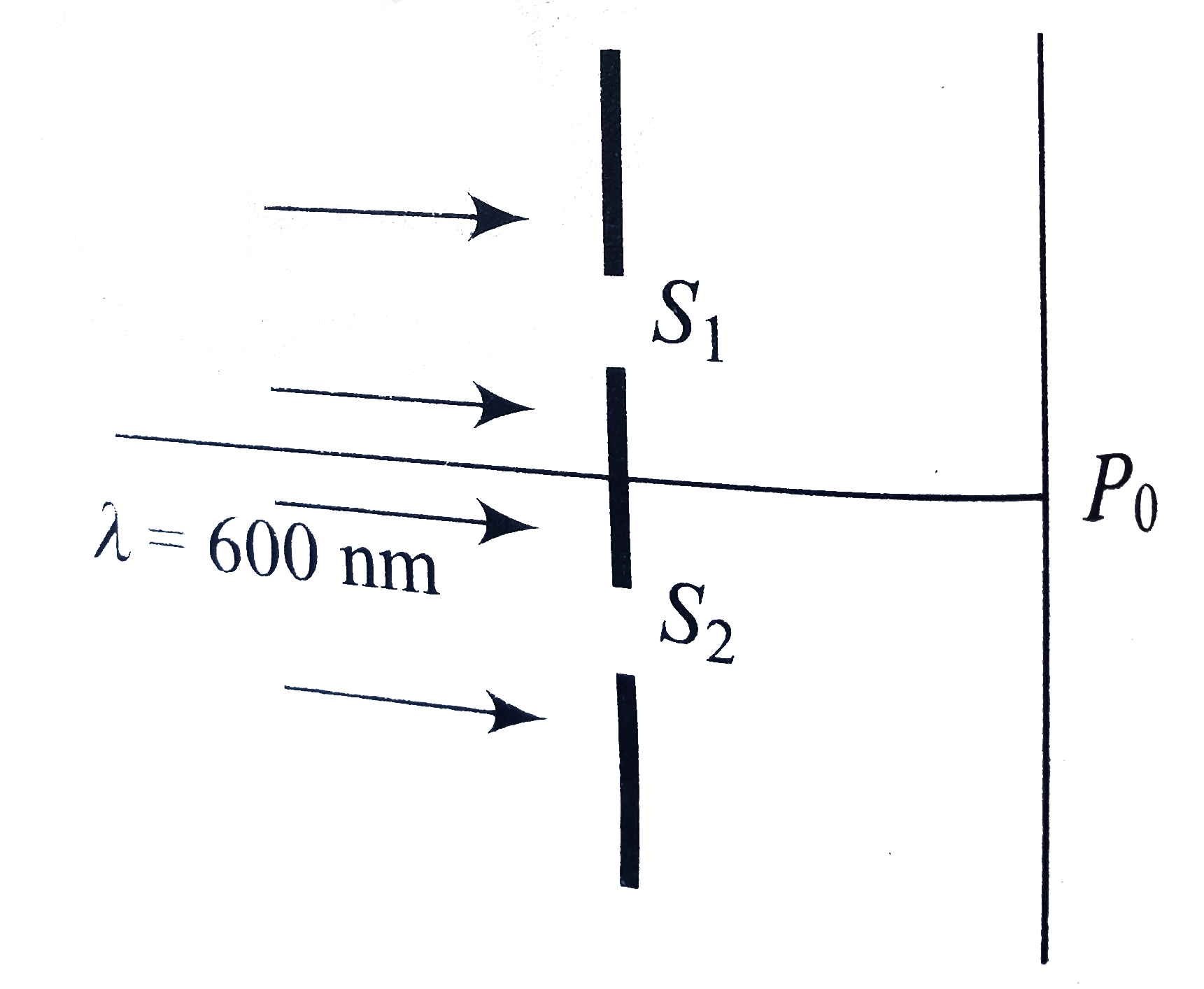 View Solution
View SolutionQuestion 34
In Young's doulbe-slit experiment the separation between two coherent sources S1 and S2 is d and the distance between the source and screen is D. In the interference pattern, it is found that exactly in front of one slit, there occurs a minimum. Then the possible wavelengths used in the experiment areView SolutionQuestion 44
In the ideal double-slit experiment, when a glass-plate(refractive index 1.5) of thickness t is introduced in the path of one of the interfering beams (wave-length λ), the intensity at the position where the central maximum occurred previously remains unchanged. The minimum thickness of the glass-plate isView SolutionQuestion 48
In YDSE, light of wavelength λ=5000Å is used, which emerges in phase from two a slits distance d=3×10−7m apart. A transparent sheet of thickness t=1.5×106(−7)m, refractive indes n=1.17, is placed over one of the slits. Where does the central maxima of the interference now appear from the center of the screen? (Find the value of y?)
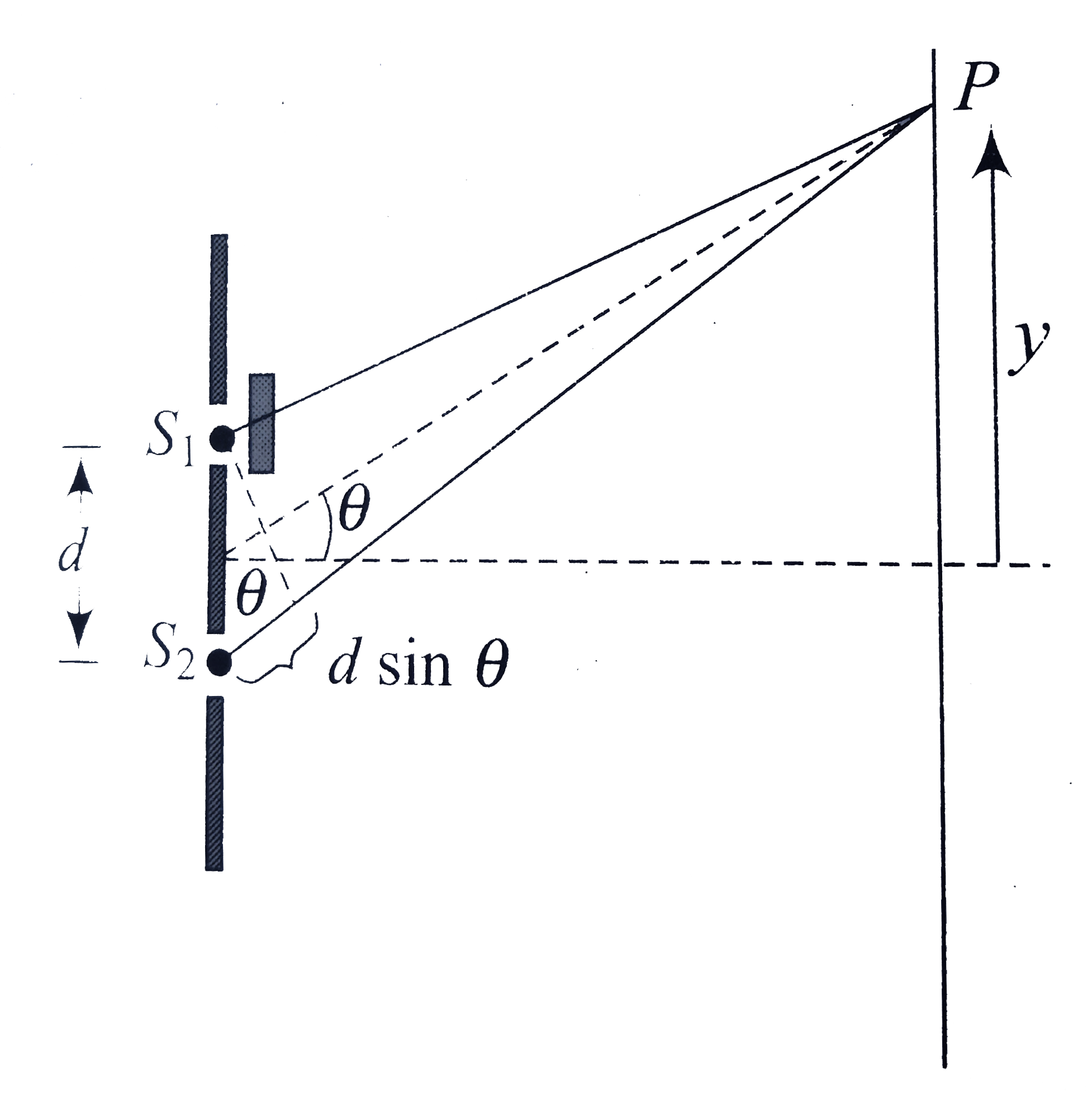 View Solution
View SolutionQuestion 49
A double-slit experiment is immersed in a liquid of refractive index 1.33. It has slit separation of 1 mm and distance between the plane of slits and screen is 1.33 m. The slits are illuminated by a parallel bam of light whose wavelength in air is 6830Å. Then the fringe width isView SolutionQuestion 51
A light of wavelength 6000Å shines on two narrow slits separeted by a distance 1.0 mm and illuminates a screen at a distance 1.5 m away. When one slit is covered by a thin glass plate of refractive index 1.8 and other slit by a thin glass plate of refractive index μ, the central maxima shifts by 0.1 rad. Both plates have the same thickness of 0.5 mm. The value of refractive index μ of the glass isView SolutionQuestion 54
Calculate the wavelength of light used in an interference experiment from the following data: Fringe width = 0.03 cm. Distance between slits and eyepiece through which the interference pattern is observed is 1 m. Distance between the images of the virtural when a convex lens of focal length 16 cm is used at a distance of 80 cm from the eyepiece is 0.8 cm.View SolutionQuestion 57
In a Young's double slit experiment using monochromatic light, the fringe pattern shifts by a certain distance on the screen when a mica sheet of refractive index 1.6 and thickness 1.964 microns is introduced in the path of one of the interfering waves. The mica sheet is then removed and the distance between the slits and screen is doubled. It is found that the distance between successive maxima now is the same as observed fringe shift upon the introduced of the mica sheet . Calculate the wavelength of the monochromatic light used in the experiment .View SolutionQuestion 59
In Young's double-slit experiment, the slit are 0.5 mm apart and the interference is observed on a screen at a distance of 100 cm from the slits, It is found that the ninth bright fringe is at a distance of 7.5 mm from the second dark fringe from the center of the fringe pattern. The wavelength of the light used is View SolutionQuestion 61
Two waves of light in air have the same wavelength and are intially in phase. They then travel through plastic layers with thickness of L1=3.5mm and L2=5.0mm and indices of refraction n1=1.7 and n2=1.25 as shown in figure. The rays later arrive at a common point. The longest wavelength of light for which constructive interference occurs at the point is
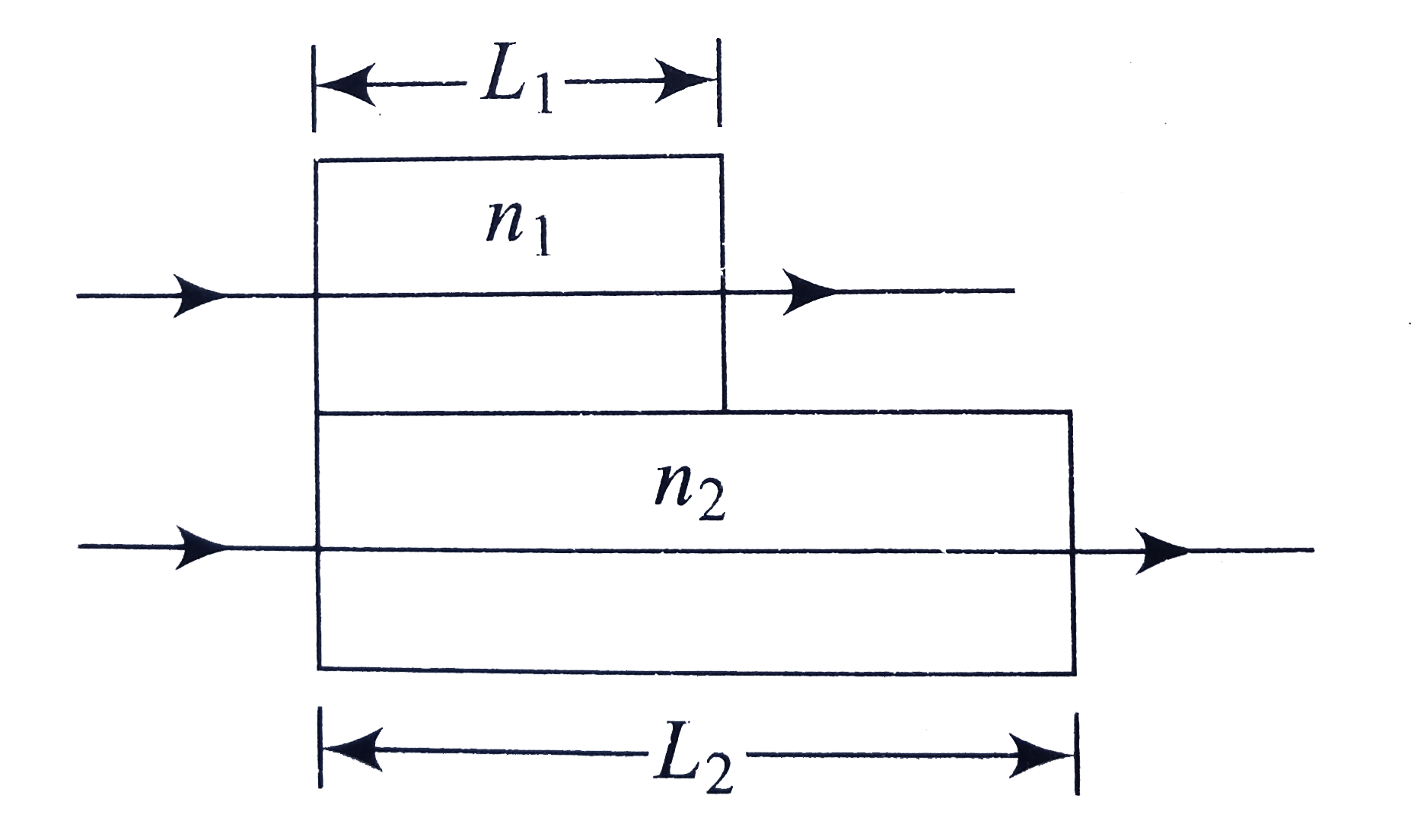 View Solution
View SolutionQuestion 62
Light from a sources emitting two wavelengths λ1 and λ2 is allowed to fall on Young's double-slit apparatus after filtering one of the wavelengths. The position of interference maxima is noted. When the filter is removed both the wavelengths are incident and it is found that maximum intensity is produced where the fourth maxima occured previously. If the other wavelength if filtered, at the same location the third maxima is found. What is the raito of wavelength?View SolutionQuestion 64
As shown in figure waves with identical wavelengths and amplitudes and which are intially in phase travel through difference media. Ray 1 travels through air and Ray 2 through a transparent medium for equal length L, in four different situations. Rays reach a common point on the screen. The number of wavelengths in length L is N2 for Ray 2 and N1 for Ray 1. In the following table, values of N1 and N2 are given for all four situations. The order or the situations according to the intensity of the light at the common point in descending order is Situations
1 2 3 4
N1 2.75 1.80 3.00 3.25
N2 2.75 2.80 3.25 4.00
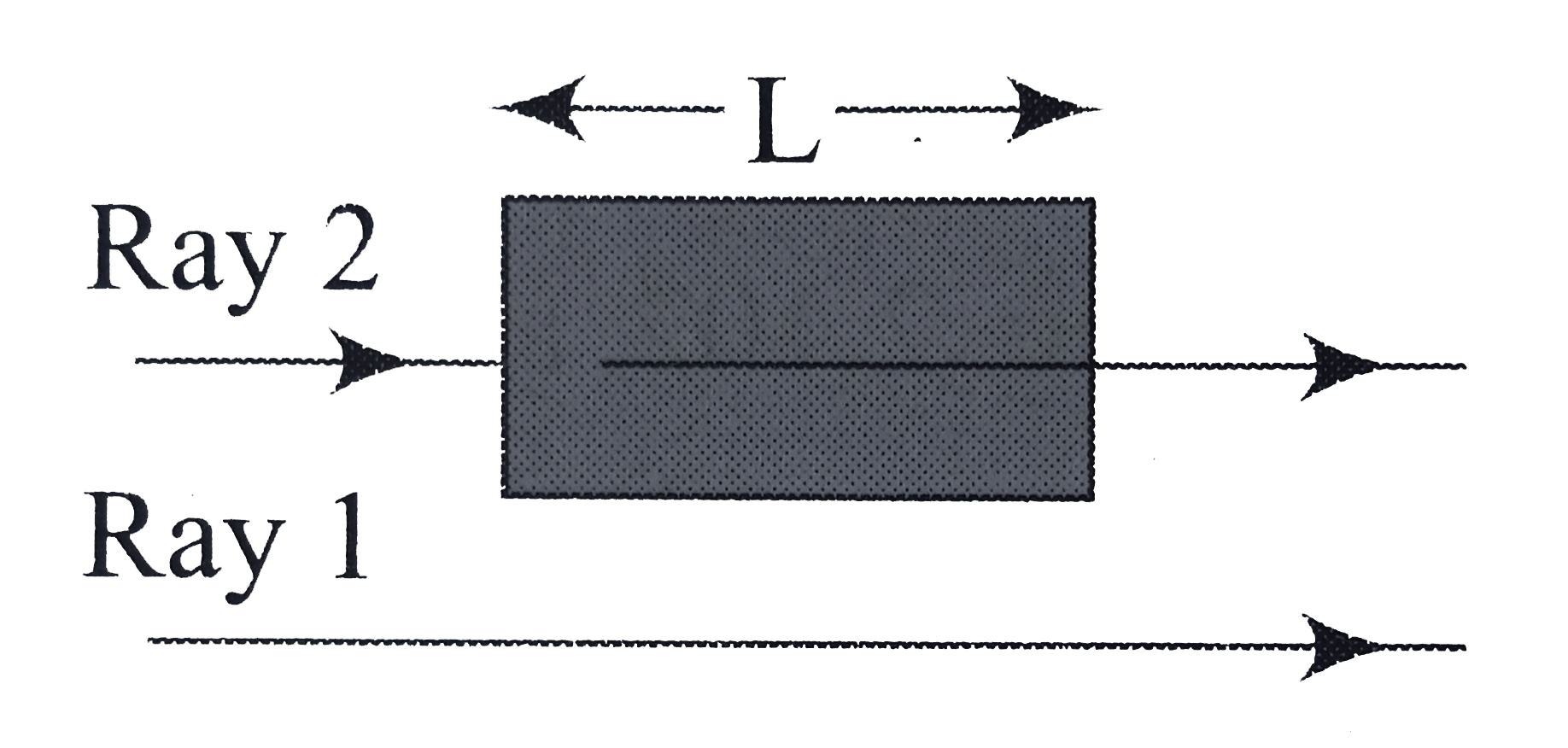 View Solution
View SolutionQuestion 70
In YDSE shown in figure a parallel beam of light is incident on the slits from a medium of refractive index n1. The wavelength of light in this medium is λ1. A transparent of thickness t and refractive index n3 is put in front of one slit. The medium between the screen and the plane of the slits is n2. The phase difference between the light waves reaching point O (symmetrical, relative to the slits) is
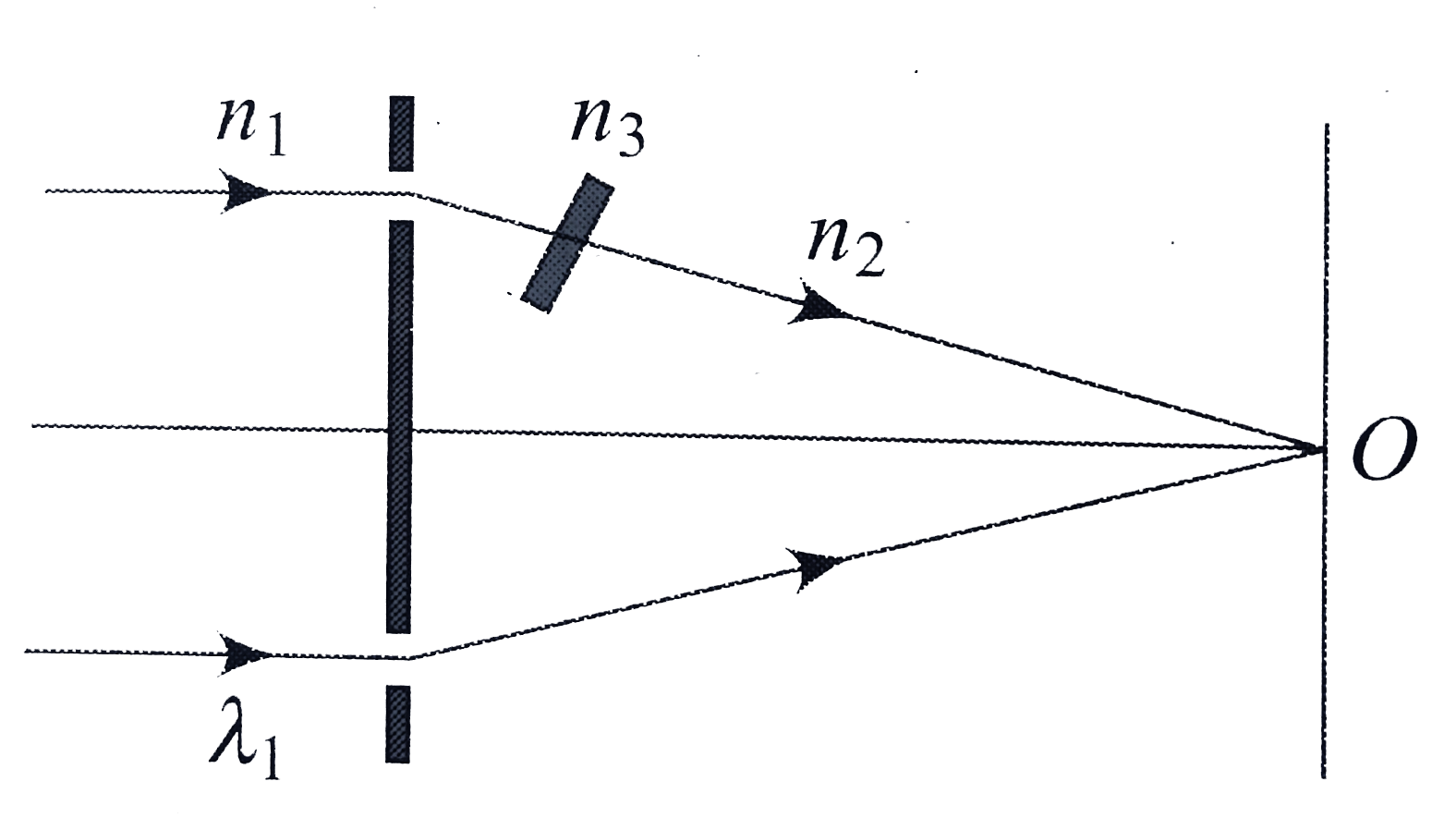 View Solution
View SolutionQuestion 72
In figure, parallel beam of light is incident on the plane of the slits of a Young's double-slit experiment. Light incident on the slit S1 passes through a medium of variable refractive index μ=1+ax (where 'x' is the distance from the plane of slits as shown), up to distance 'I' before falling on S1. Rest of the space is filled with air. If at 'O' a minima is formed. then the minimum value of the positive constant a (in terms of l and wavelength λ in air) is
 View Solution
View SolutionQuestion 73
Interference fringes were produced using light in a doulbe-slit experiment. When a mica sheet of uniform thickness and refractive index 1.6 (relative to air) is placed in the path of light from one of the slits, the central fringe moves through some distance. This distance is equal to the width of 30 interference bands if light of wavelength 4800 is used. The thickness (in μm) of mica isView SolutionQuestion 92
Two transparent slabs have the same thickness as shown in figure. One in made of material A of refractive index 1.5. The other is made of two materilas B and C with thickness in the ratio 1:2. The refractive index of C is 1.6. If a monochromatic parallel beam passing through the slabs has the same number of wavelengths inside both, the refractive index of B is
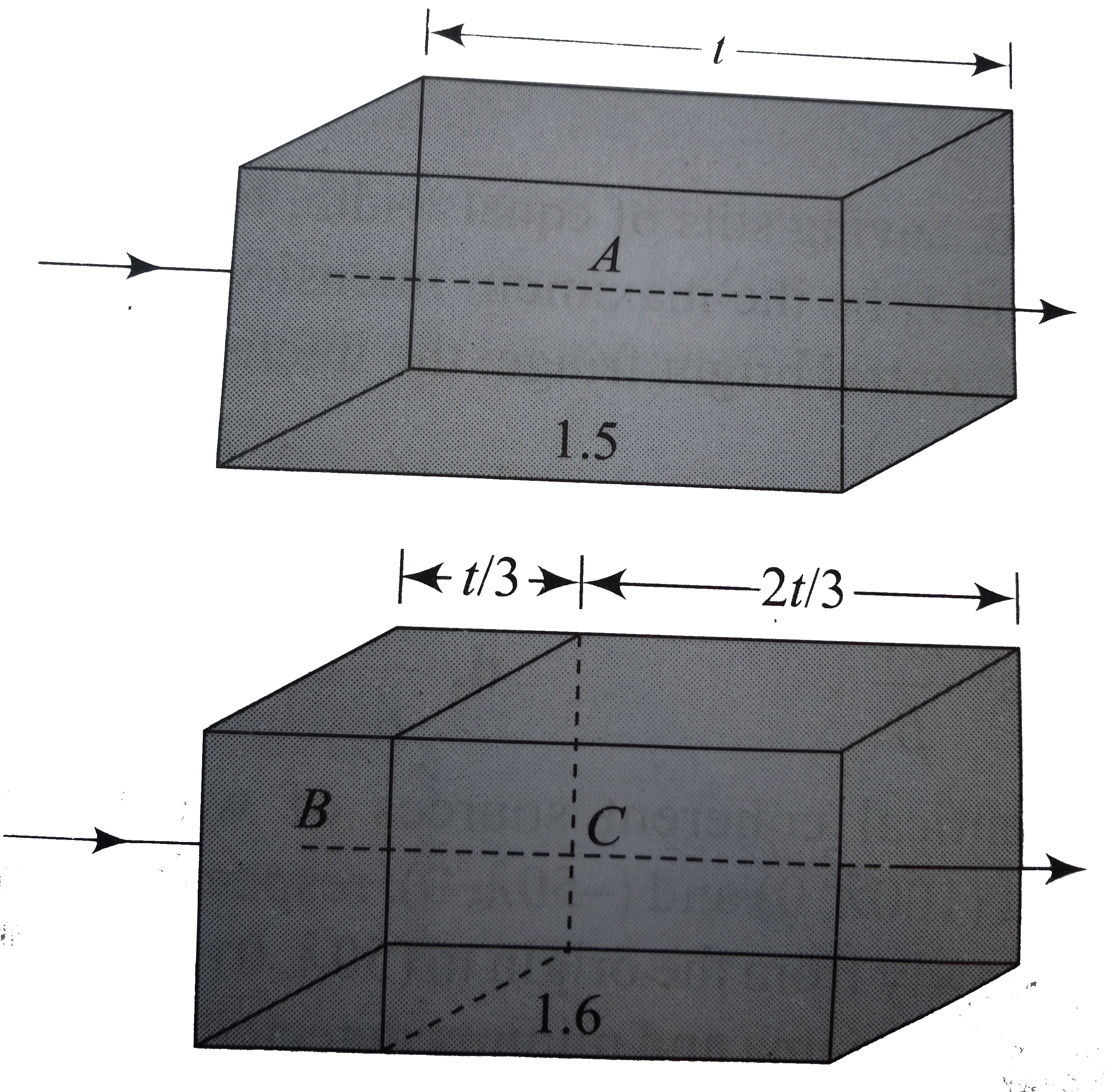 View Solution
View SolutionQuestion 94
In a Young's double slit experiment, the slits are 2mm apart and are illuminated with a mixture of two wavelength λ0=750nm and λ=900nm. The minimum distance from the common central bright fringe on a screen 2m from the slits where a bright fringe from one interference pattern coincides with a bright fringe from the other is View SolutionQuestion 98
A flake of glass (refractive index 1.5) is placed over one of the opening of a double-slit apparatus. The interference pattern displaced itself through seven successive maxima toward the side where the flake is placed. If wavelength of the light is λ=600nm, then the thickness of the flake is View SolutionQuestion 99
Two identical sources each of intensity I0 have a separation d=λ/8, where λ is the wavelength of the waves emitted by either source. The phase difference of the sources is π/4 The intensity distribution I(θ) in the radiation field as a function of θ Which specifies the direction from the sources to the distant observation point P is given byView SolutionQuestion 103
In a Young's double slit experiment using monochromatic light, the fringe pattern shifts by a certain distance on the screen when a mica sheet of refractive index 1.6 and thickness 1.964 microns is introduced in the path of one of the interfering waves. The mica sheet is then removed and the distance between the slits and screen is doubled. It is found that the distance between successive maxima now is the same as observed fringe shift upon the introduced of the mica sheet . Calculate the wavelength of the monochromatic light used in the experiment .View SolutionQuestion 106
YDSE is carried with two thin sheets of thickness 10.4μ m each and refractive index μ1=1.52andμ2=1.40 covering the slits S1andS2 respectively. If white light of range 400nm to 780 nm is used, then which wavelength will form maxima exactly at point O, the centre of the screen
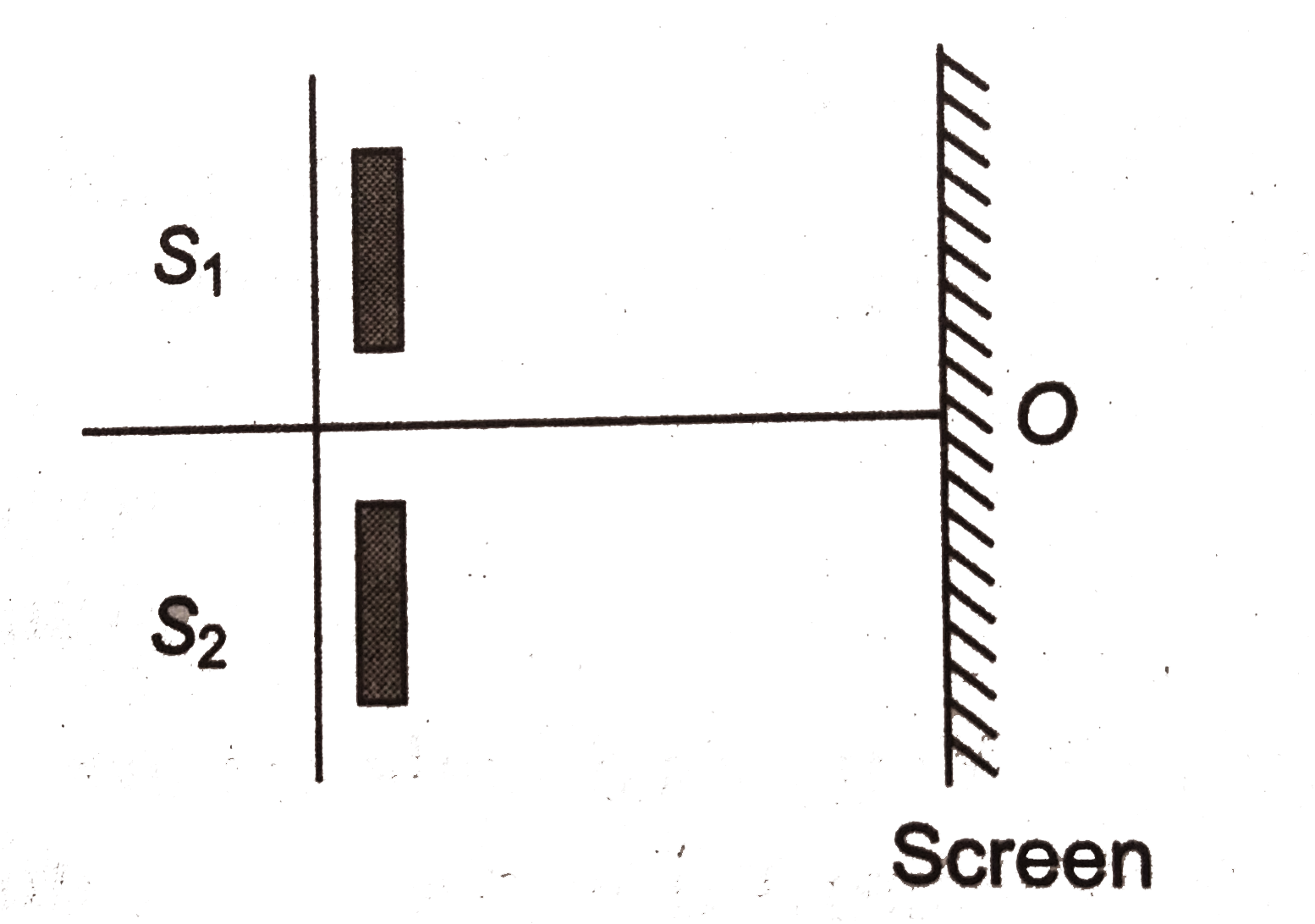
View SolutionQuestion 107
High-quality camera lenses are often coated to prevent reflection. A lens has an optical index of refraction of 1.72 and a coating with an optical index os refraction 1.31. For near normal incidence, the minimum thickness of the coating to prevent reflection for wavelength of 5.3×10−7m isView SolutionQuestion 108
A long horizontal slit is placed 1 mm above a horizontal plane mirror. The interference between the light coming directly from the slit and the after reflection is seen on a screen 1 m away from the slit. If the mirror reflects only 64% of the light falling on it, the ratio of the maximum to the minimum intensity in the interference pattern observed on the screen is View SolutionQuestion 110
In young's double-slit experiment set up, sources S of wavelength 50 nm illumiantes two slits S1 and S2 which act as two coherent sources. The sources S oscillates about its own position according to the equation y=0.5sinπt, where y is in nm and t in seconds. The minimum value of time t for which the intensity at point P on the screen exaclty in front of the upper slit becomes minimum is
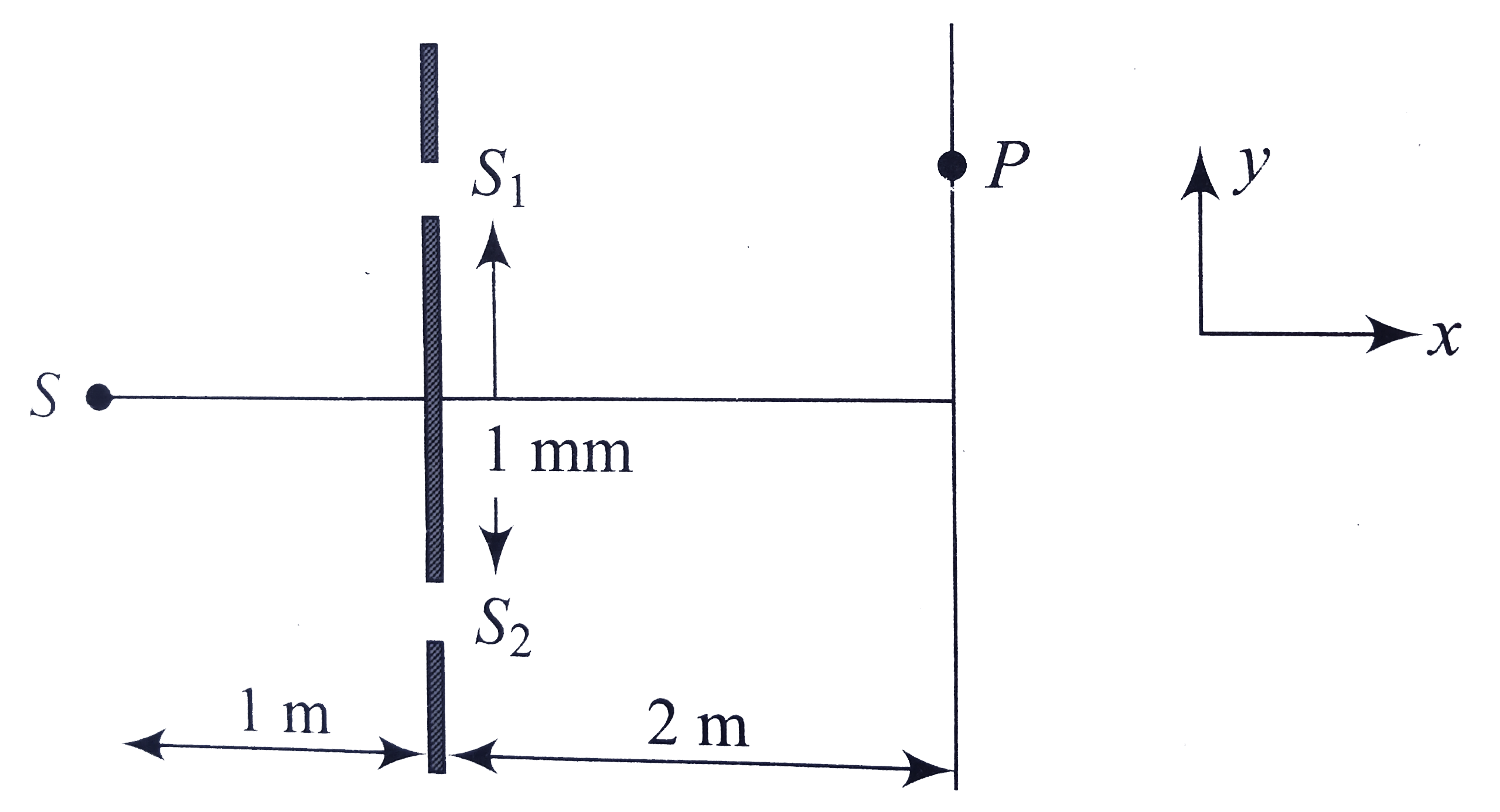 View Solution
View SolutionQuestion 112
A thin uniform film of refractive index 1.75 is placed on a sheet of glass of refractive index 1.5. At room temperature (20∘C) this film is just thick enoungh for light with wavelength 600 nm reflected off the top of the film to be canceled by light reflected from the top the glass. After the glass is placed in on oven and slowly heated to 170∘C, the film conceals reflected light with wavelength 606 nm. The coefficient of linear expansion of the film is (ignore any changes in the refractive index of the film due to the temperature change)View SolutionQuestion 113
Two slits speet 0.25 mm apart are placed 0.75 m from a screen and illuminated by coherent light with a wavelength of 650 nm. The intensity at the center of the central maximum (θ=0∘) is I0. The distance on the screen from the center of the central maximum to the point where the intensity has fallen to I0/2 is nearlyView SolutionQuestion 115
The index of refraction of a glass plate is 1.48 at θ1=30.∘C and varies linearly with temperature with a coefficient of 2.5×10−5.∘C−1. At 30.∘C, the length of the glass plate is 3 cm. This plate is placed in front of one of the slit n Young's double-slit experiment. If the plate is being heated so that it temperature increases at a rate of 5∘C−1 min, the light sources has wavelength λ=589nm and the glass plate initially ia at θ=30∘C. The number of fringes that shift on the screen in each minute is nearly (use approximation)View SolutionQuestion 116
Two thin parallel slits are made in on opaque sheet of film when a monochromatic beam of light is shonw through then at normal incidence. The first bright fringes in the transmitted light occur at ±45∘ with the original direction of the ligth beam on a distant screen when the apparatus is in air. When the apparatus is immersed in a liquid, the same bright fringe now occur at ±30∘. The index of refraction of the liquid isView SolutionQuestion 121
A parallel beam of light (λ=500) is incident at an angle α=30∘ with the normal to the slit plane in Young's double-slit experiment. Assume that the intensity due to each slit at any point on the screen is I0. Point O is equidistant from S1 and S2. The distance between slits is 1 mm. Then
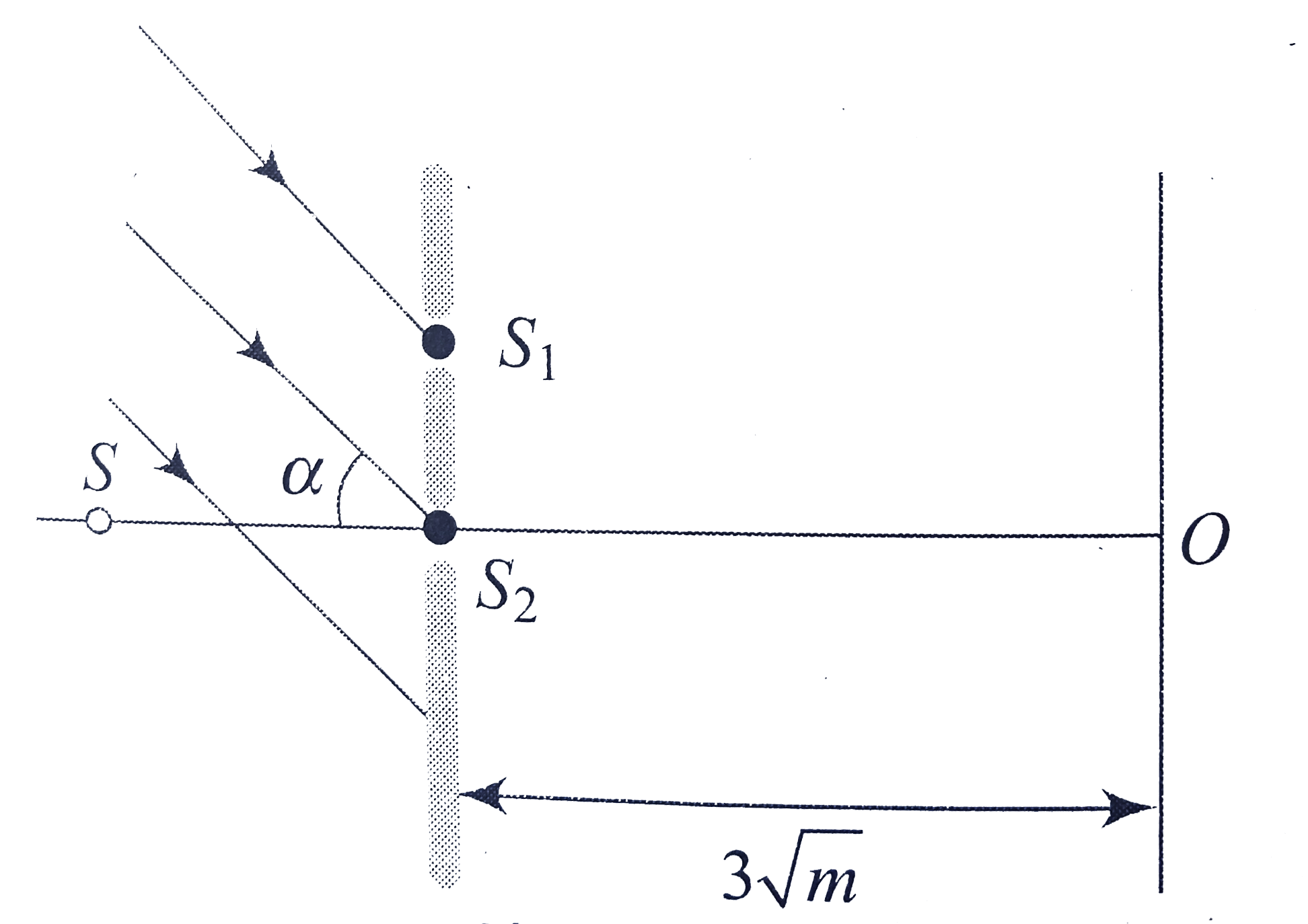 View Solution
View SolutionQuestion 126
A light wave of wavelength λ0 propagates from point A to point B. We introduce in its path a glass plate of refractive index n and thickness l. Then introduction of the plate alters the phase of the plate at B by an angle ϕ. If λ is the wavelength of light on emeriging from the plate, thenView Solution

